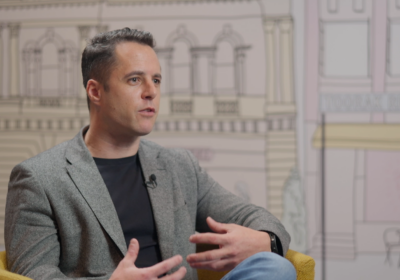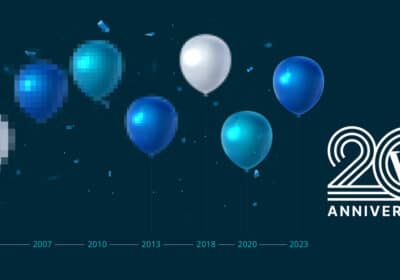FreshBooks set out to redefine accounting for small business. Along the way, they’ve also helped redefine how B2B software is marketed and sold online. From the beginning, providing helpful, engaging content has been central to their strategy to attract and convert their busy, often overwhelmed target buyer.
To find out more about how FreshBooks uses content to drive online B2B sales, we spoke to Jane Flanagan, the company’s content director. Here’s what she had to say.
What’s your philosophy when it comes to using content to drive online B2B sales?
When I started in this role (18 months ago), content was really seen as a way of building brand awareness, which kept my activities mostly top of funnel. Gradually, we’ve reconfigured that thinking and we now see content as a full funnel experience to qualify, nurture and convert prospects.
It’s very basic, but my own philosophy is to configure your daily tools to reinforce whatever content strategy you’re supporting.
It’s very practical, but, for example, our content calendar breaks out content by TOFU, MOFU and BOFU to ensure we’re striking the right balance. The fact that we identify funnel and customer need for every piece of content we produce keeps us on the straight and narrow. It also informs how we package and present the content; we’re always considering what the visitor’s next natural step might be.
As content marketers, we have crystal clear ideas of what we want visitors to do next. The problem is there can be a huge disconnect between that and what most visitors naturally want to do next. For example, we want them to read a piece of content and then subscribe to our newsletter. They want to read the piece of content and bounce.
The key for me is aligning our content and presentation with what visitors want to do next so we’re both pulling in the same direction. This is something working in news media for many years taught me. Sincere reader-centricity is key, even when you’re ultimately trying to sell a product.
What do you see as the biggest trend in B2B content marketing right now, especially for SaaS companies? The biggest challenge?
I really see a maturing attitude to the role content should play at a company. I see more and more organizations transitioning from staccato content production efforts, to having a fully orchestrated and integrated content strategy.
Implicit in that is a shift away from eyeballs as the primary metric of success. It’s not a new idea that this is an anemic metric, but measuring eyeballs is somewhat irresistible for an early-stage content marketer.
With that bigger strategy comes new demands: Many content marketers landed where they are by pivoting out of editorial roles and offering their value in terms of content quality. I think we’ll have to work through reconciling editorial value with marketing insights, reconciling storytelling with real, robust metrics.

For me this is the fun of being a content marketer. Like you, I’m an old school journalist, so reader-centricity and quality writing are part of my DNA.
But as Seth Godin pointed out just this week, the frank truth is content that is dumbed-down content often performs better in the short run.
“If you want to reach more people, if you’re measuring audience size, then the mantra of the last twenty years has been simple: make it dumber.”
The job then of the content marketer, then, is to find that sweet spot; where content is beautifully simple and effective, but not dumbed-down to the point of degradation. For me, that’s a worthwhile challenge and one that I relish.
What do you see as the most under-appreciated channel for B2B marketing right now?
Native content partnerships. Content marketers use a lot of distribution channels, but I don’t think they’ve embraced hitching their wagon to established voices offsite as much as they should have.
For me the value is threefold:
- Reach: The right partner brings an established audience in your target demo. For every piece of content BuzzFeed publishes, they distribute it through 45 other distribution channels. Think about that: They’re BuzzFeed! And yet content marketers still so often operate with a build-it-and-they’ll-come approach. Now you might think BuzzFeed and a B2B SaaS company are entirely different beasts, but the model at its heart is about reach.
- Esteem: The best partnerships are hand-in-glove fits with established experts and writers. So, the fact they’re willing to write about you on their publications is a huge rubber stamp.
- Perspective: Your brand and product is written about in a “new” voice: Content marketers are often constrained by brand guidelines when it comes to expressing themselves. This is appropriate, of course! But the difference between talking about yourself and hearing another describe you in their own words is powerful stuff and it drives results.
Besides your own content, who else do you think is doing an amazing job using content to drive B2B sales?
Lately, I’ve been watching those companies that are allocating more of their content strategy to offsite content: Zendesk Engineering on Medium is an example of this (we do something similar with Building FreshBooks on Medium).
Also, with Instagram’s rapid launch of new features, I’ve also been spending time looking at what B2B companies are doing on that platform. Instagram is a tough social plaform for B2B SaaS; office dogs often become the go-to. Wistia have done a good job finding a beautiful balance with lovely visuals and snappy, useful copy. But there’s more than just compelling imagery, there’s also needs-addressing information.
Like many content marketers I’m also working through the friction between a desire to be more nimble with video versus a desire for advertising-standard quality. So, I’m spending a lot of time looking at how have others with video. Salesforce UK’s videos crack me up.
Sometimes you just know content is good because you’re smiling!






Join the conversation